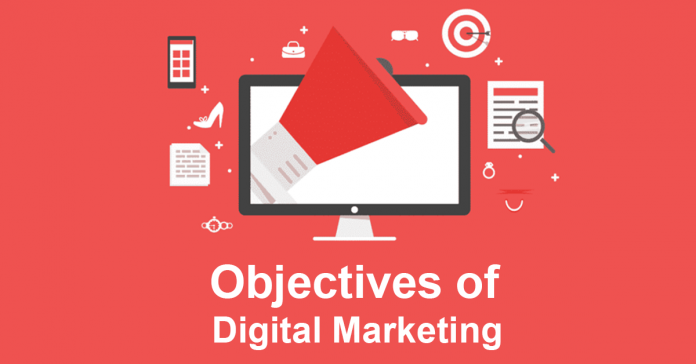Content is the atomic unit of marketing. To put resources into making and performing a content strategy covering the entirety of the buyers extend from educating and instructing to plan. Necessary leadership brings about a hearty library of great websites, infographics, on-request online courses, podcasts, recordings, white papers, and that’s only the tip of the iceberg.

With this setup, you are streaming over the different metrics from your CRM to Google analytics. What number of visits does that email campaign achieve? What number of clicks-trough? What number of views did that blog get? Did people stay on the page? What, assuming any, progress was made because of the content creation?
This learning gives valuable clues of how the content is performing. You may find that a few strategies are performing astoundingly well as far as visits or time on page, while others scarcely pulled in any attention. The problem is, you don’t have a clue why your content is not drawing in the audience. So what are the units of a content marketing strategy that will meet and interconnect your performance? What do you need to set up to begin planning and methodically creating content?
To begin with; a profitable content marketing strategy has many building squares and this is what you need to learn to get moving:
Brand Supervision
Before anything else: if many people or groups are talking for a brand, they need a definite disposition on their quality, opinion, expression, and style. If you don’t have a brand rule book and planning, start by searching brands generally like the one you strive to be, paying attention to industry or product, and take notes on what reverberates, and you can apply.
Marketing Objectives

Contingent upon your business needs, you must have distinctive performance clues and objectives for your content marketing strategies. You should make that a stride further and identify applicable analyses for different sorts of content. These could fall into classes like:
Performance marketing content (direct response advertisements, and other unique content that affiliates with sales)
Brand awareness, or potential client recognition content.
Local marketing strategy and bolster content.
Or then again, some other business goals identified with the product, promotion, arrangement, and calculation. By and large, your content may stretch out further to different offices, for example, selecting material for HR.
Figure out which of these objectives is crucial to your content’s success in the long term and set up them as the research foundations you can reliably quantify in a piece of detailing equipment or dashboard.
Client Persona
Promoting and marketing are intended to contact people, regardless of whether that is a comprehensively characterized group for a customer brand or a smaller group with specific behavioral traits.
Enter your client’s profiles (personas) you want to reach and impact, backed up by research and information you’ve collected. These can incorporate components like:
- Age
- Sex
- Income
- Area
- Status
- Employment
- job/title
Just as social and behavioural traits like:
- Personal qualities and objectives
- Customer needs
- Social impacts
- Media choices
- Fears
Try to show data about your client that the rest of the business neglects or undervalues. Frequently, it will fill in as the creative force for an effective content strategy or campaign standing.
Information and Market Research

Research and information are the pillars of client information and understanding. This can be real information (site traffic socioeconomics, sales information, surveys, analysis, client criticism, or other registered brand services), unique, essential research.
Tools like Google’s Consumer Barometer can help you with understanding diverse demographic groups and their online buying behaviour.
Client Journey Map
When your goals outline what you want, your persona and research work define who your client is, a journey map shows your clients’ particular needs, and how you can meet them. A viable journey map draws the circular story segment of a potential client as they progress through their reality and connect with your product, from their point of view. Even though client journey maps can be shown off a conventional marketing pipeline, they are not really straight, adding overlays and new steps to an excellent way to-buy model. A client can hop from one phase to another depending on various factors and triggers, and they may connect with a portion of your channels and touchpoints while skipping others completely.
Your journey guide ought to be custom-made to your particular client profile and how you reach and connect with them. Next to the stages you’ve sketched out, outline the story of your client, giving special attention to their:
Activities
What’s the story of your clients that leads them to affiliate with your product? What’s going on with your client? What moves would they say they are making to move on to the following stage?
Context
What else do we think about your client? If your client experience is exceptional, what tools they say they are on at a given stage?
Questions
What are your client’s open questions or vulnerabilities, keeping the client from moving to the next phase of their journey?
Motivations
What does your client care about? Why and how would they care about you in the setting? For what reason is the client roused to prop up to the next step? What feelings do they say they are holding?

Brand Relationship
What are the touchpoints and possibilities among you and the client? What barriers hold up the traffic of them moving to the next step?
Content-Market Fit (Content Domains, Topics, and Media blend)
For what it’s worth to understand your client, from a content marketing point of view, it’s also important to understand the present condition of content in your industry to search for opportunities and availability.
What Content Will Clients Care About?

To be a vital accomplice to your clients, you have to understand what they are battling with when attempting to settle on a choice and what content would help them with exploring their journey map. This implies understanding their needs and knowing what’s important to them. Asking questions through Research Prospect how they can be managed, where clients are getting respect and where there are spaces, and even merely keeping a heartbeat on an ever-evolving industry.









